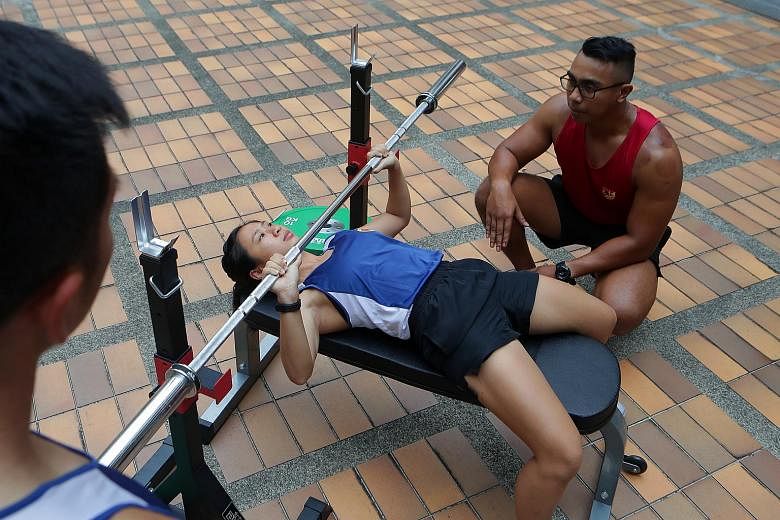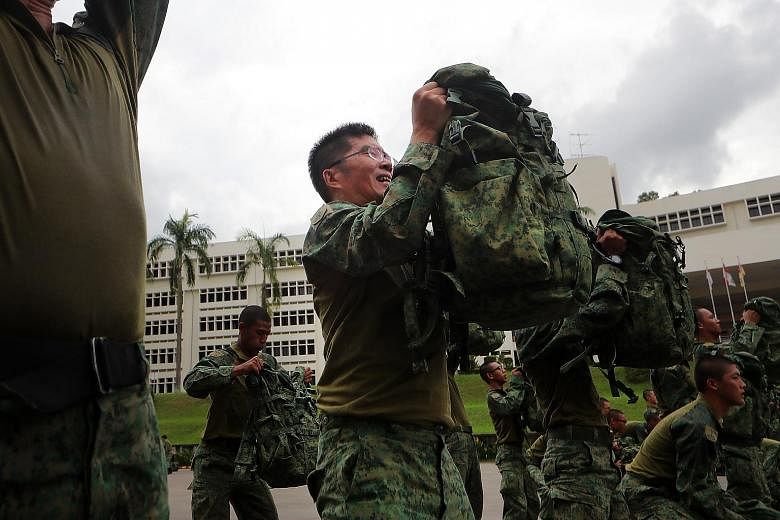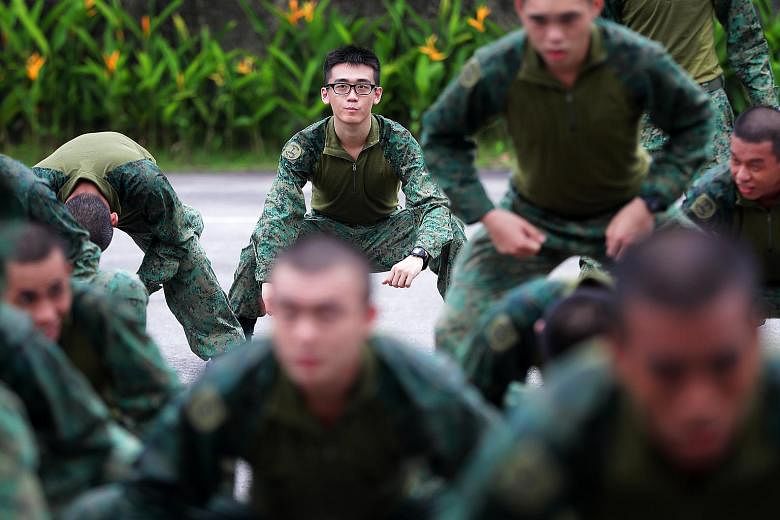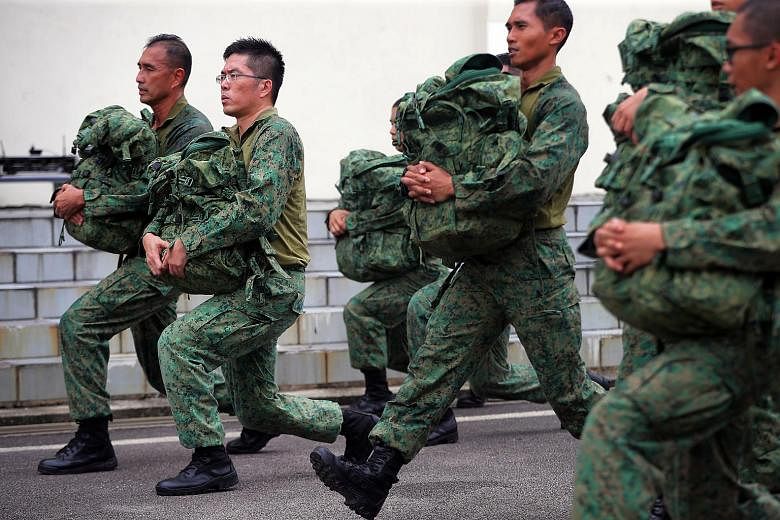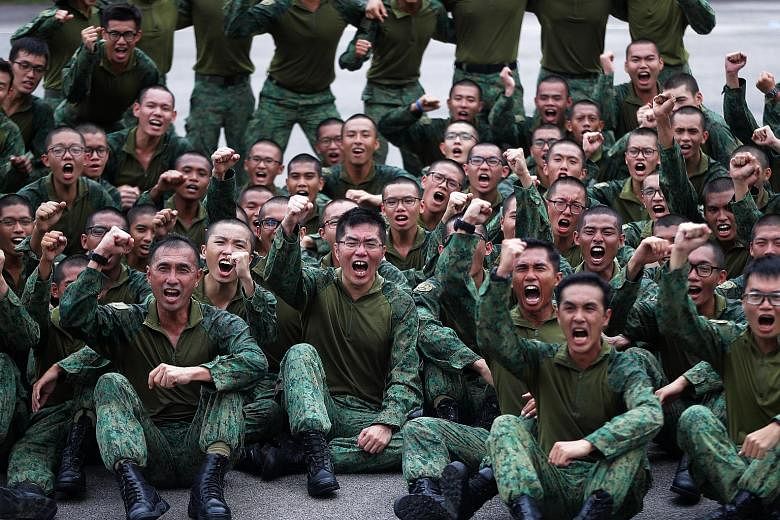SINGAPORE - Singapore Armed Forces soldiers are now wearing new, cooler and faster-drying hybrid uniforms when training out in the field, reducing the risk of heat injuries.
The body of the uniform is made of a green T-shirt-like fabric that is a combination of flame-resistant synthetic material and aramid. The long sleeves are of the pixelised fabric used in the standard No. 4 uniform.
The new uniform is 40 per cent more permeable and dries 60 per cent faster than the standard No. 4 uniform, providing better air circulation and heat dissipation.
It was rolled out in January for soldiers in army combat units.
The uniform was unveiled to the media on Tuesday (June 19).
The hybrid uniform will be worn during outfield exercises and combat physical training and the No. 4 uniform will be worn for other routine activities such as parades.
All soldiers in the 3rd and 6th Battalions of the Singapore Infantry Regiment (3SIR and 6SIR) have been given two sets of the new uniforms. Other combat units will be fully equipped by end of the year.
Said Senior Lieutenant-Colonel Yee Kok Meng, head of the Centre of Excellence for Soldier Performance: "When soldiers wear the integrated load-bearing vests (on top of the hybrid uniform), they would feel more comfortable and endure longer in a combat environment."
The integrated load-bearing vest is a type of combat vest.
Like its name implies, the centre aims to maximise soldier performance by using sport science and customising fitness programmes.
There are no plans for operationally-ready national servicemen (NSmen) to wear the hybrid uniform.
It was conceptualised in 2011 for the army and has undergone extensive trials. The Defence Science and Technology Agency and ST Logistics were involved in crafting the technical specifications and ensuring its quality.
Private Kugan Senivasan, 18, a trooper in 4SIR, which recently started introducing the hybrid uniform, said: "The (long-sleeved) No. 4 uniform drags on your body a lot, but the hybrid is rather smooth and comfortable. So the fact that we get to use this for our training is very beneficial."
He wore the hybrid uniform for the first time on Tuesday while doing exercises with his field pack, such as lunges and lifts.
SLTC Yee also gave the media on Tuesday updates on the work the centre has done since it opened last December
It has implemented a programme that allows soldiers to do supervised recovery exercises at their own units, instead of being referred to a specialist, in seven units.
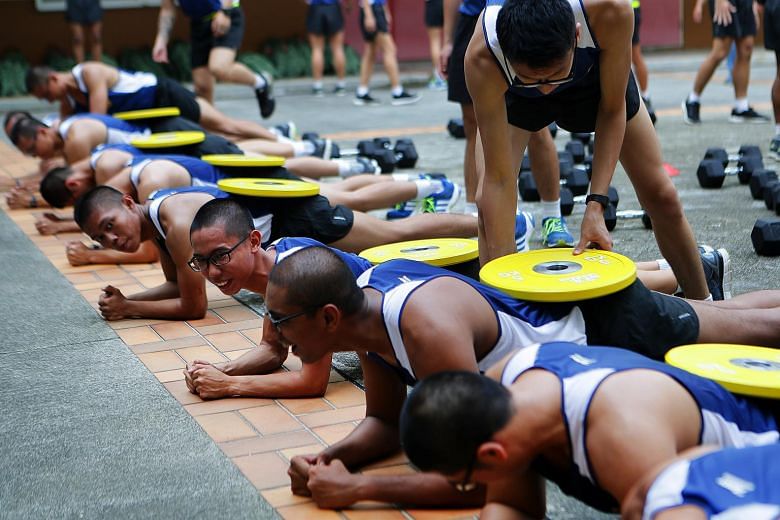
Before the programme, a soldier might take weeks to get a specialist appointment, so the new programme helps cut down the waiting time.
The Rehabilitation at Unit programme has been implemented in units such as the 2nd, 3rd, 4th and 6th Battalions of the Singapore Infantry Regiment, as well as in 1st Guards.
In these units, preliminary data shows that soldiers now experience about 30 per cent fewer musculoskeletal injuries.
Lower back, knee and ankle injuries form about 70 per cent of all musculoskeletal injuries suffered by soldiers, according to army studies.
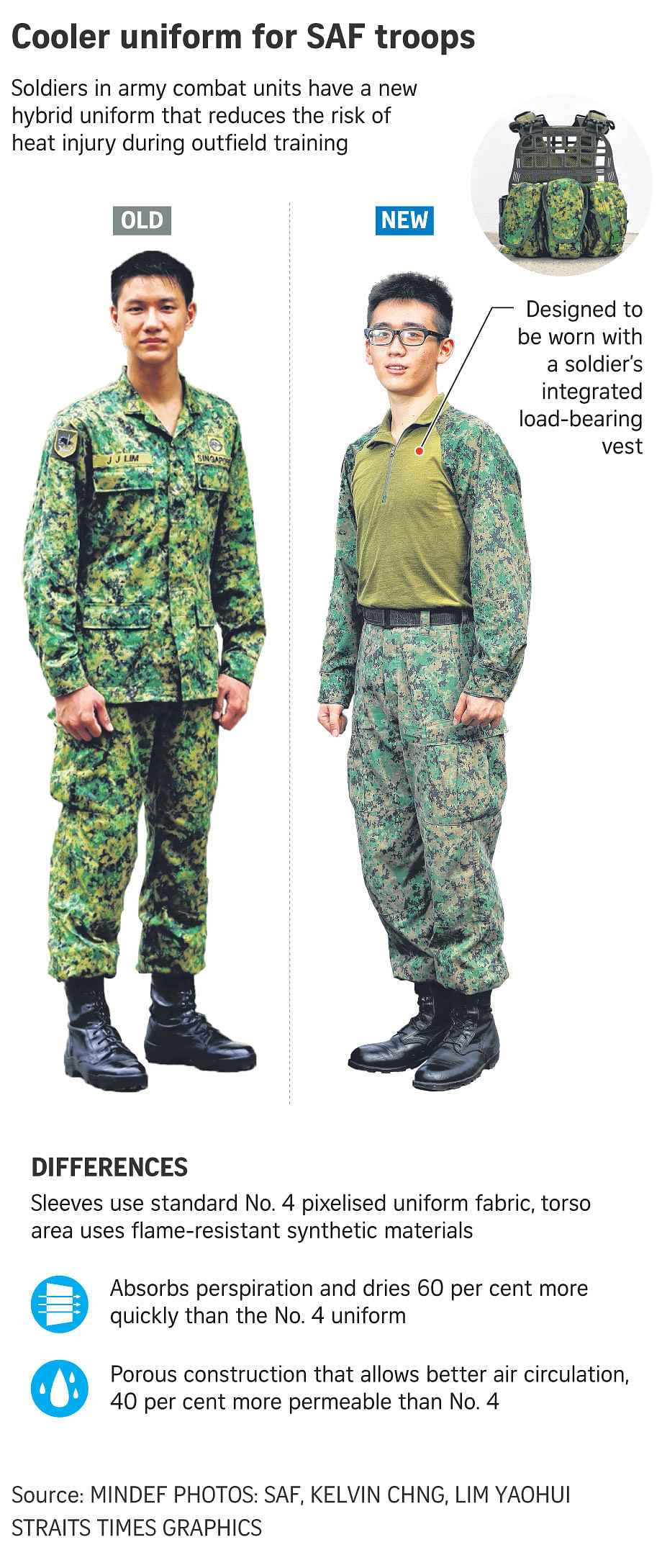
A wearable technology prototype will also be trialled by 150 cadets from the Officer Cadet School for six months. The sensor can gather information such as pulse rate, skin temperature and sleep activity.
The data gathered could be used to develop a training application for soldiers to track their own performance, and a real-time monitoring system to help commanders detect soldiers in distress.
How the prototype would be worn, such as whether as an armband or a wrist-strap, has not been decided.
The centre has also developed a four-week Vocation Fitness Training (VFT), which is a customised programme divided into three main types: combat, combat support, and combat service support units.
It has been implemented in all army combat units, namely infantry, guards, commando and armour units.
Combat support units - which include engineers as well as signals and artillery units - will embark on Vocation Fitness Training by the end of this year.
The training will be customised to what the soldiers do out in the field. For example, exercises will target strengthening the lower body and increasing endurance for carrying heavy loads for long distances.
Second Sergeant Simone Goh, 23, a section commander in 4SIR, said: "For infantry soldiers, we have to (work for) the combat skills badge in the future, which requires walking for 32km, and navigation exercises overseas for up to 50km, so this training would help build up our endurance."

